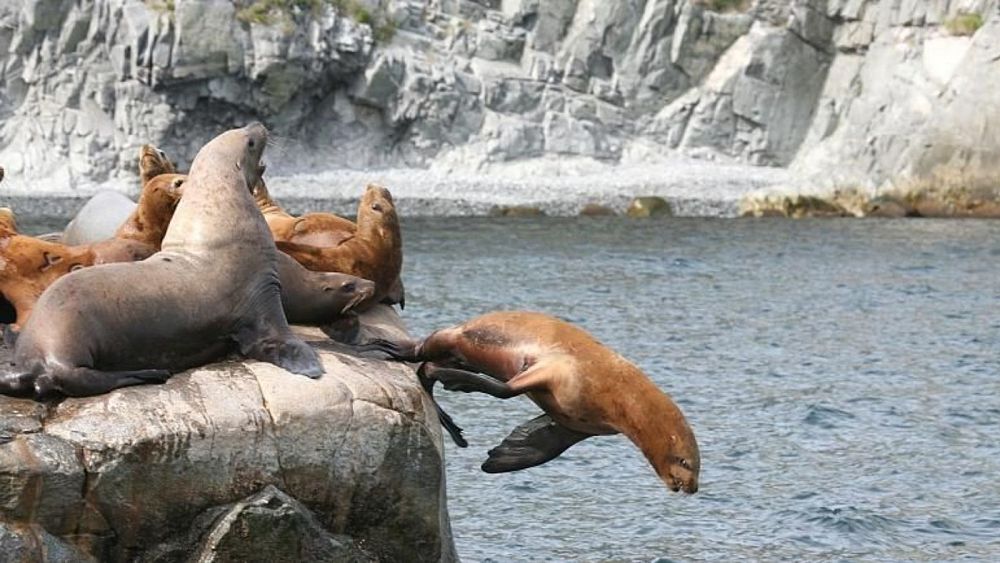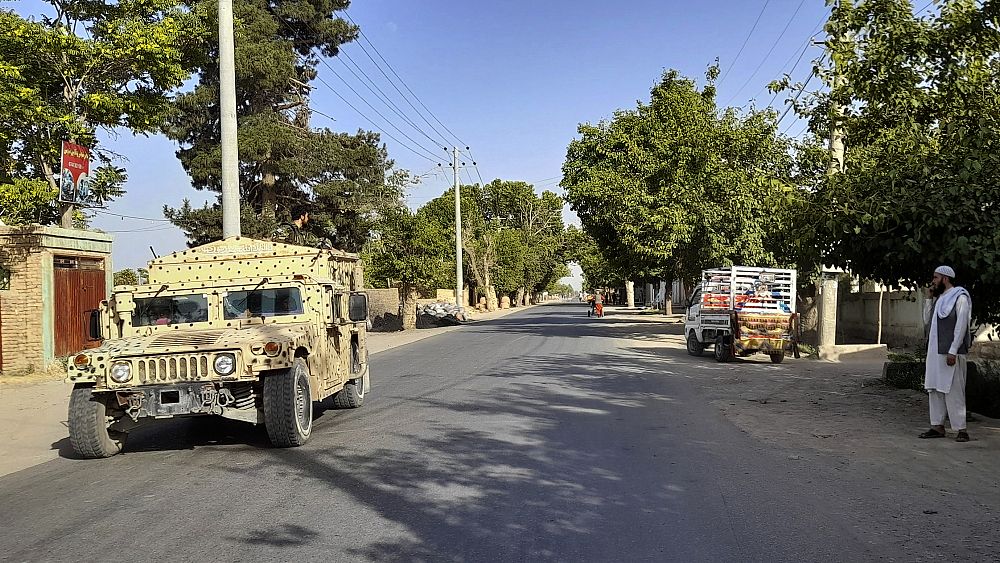Environmental activists are demanding answers after several sea animals have washed ashore on the Kamchatka peninsula in eastern Russia.
Carcasses of seals, octopus, and sea urchins have been covering the remote coasts for several days, with Greenpeace denouncing the incident as an “ecological disaster”.
The sea creatures are believed to have been victims of a toxic spillage in the Pacific Ocean, but the official cause of pollution has not been established.
Pacific Fleet headquarters have denied any involvement in the environmental crisis, and local authorities have not reported any recent industrial accidents or unusual events.
Images of the damage around Khalaktyrsky beach, an area popular with surfers, have been posted on social media.
A number of surfers and divers in the area have reported “strange and unpleasant symptoms“, including vomiting, eye, and throat pains after contact with the water.
According to the region’s Ministry of Health, at least nine people have sought medical attention since visiting Khalaktyrsky beach last week.
Greenpeace says that there were “four times more petroleum products and 2.5 times more phenol” in the water than the authorized standards.
Vasily Yablokov, head of Greenpeace’s climate project in Russia, told Euronews that the unknown toxic substance has reached several kilometres in length.
“It is strange that it is still not clear what is causing (the pollution), but we only know that it has a very destructive effect on wildlife,” said Yablokov.
“Wherever this stain passes, marine fauna is dying on a massive scale … the whole seafloor is dotted with bodies of sea animals.
“All of our underwater beauty is now grey and yellow, it’s like the fish are cooked in boiling water.”
Yablokov told Euronews that hundreds of kilograms of samples were sent to Moscow for analysis by state and public structures.
The NGO says it has contacted authorities to “call for an immediate investigation … an assessment of the extent and urgent removal of the consequences” of the incident.
The governor of Kamchatka, Vladimir Solodov, has promised to establish the facts and threatened to dismiss anyone who had covered up the scale of the situation.
Local authorities have not ruled out that the pollution could be the result of seismic activity or natural phenomena, such as “the algae that were brought to the coast during a storm”.
The regional Ministry of Ecology had said in an Instagram post on Saturday that Khalaktyrsky beach “is completely clean” and “nothing abnormal has been recorded.”
But previously, the state meteorological service confirmed that the content of phenol and petroleum products was much higher than normal in the area.
The Russian Investigation Committee has also promised on Saturday an investigation into this “possible ecological disaster”.
Kamchatka is one of the most remote areas of Russia but is increasing in popularity with tourists for its wilderness, volcanoes, and wildlife.
The area had remained closed until the fall of the USSR because of its numerous military installations.
In May, 21,000 tonnes of fuel leaked into Arctic rivers in northern Russia after the collapse of a tank at a thermal power station belonging to the Norilsk Nickel group.






